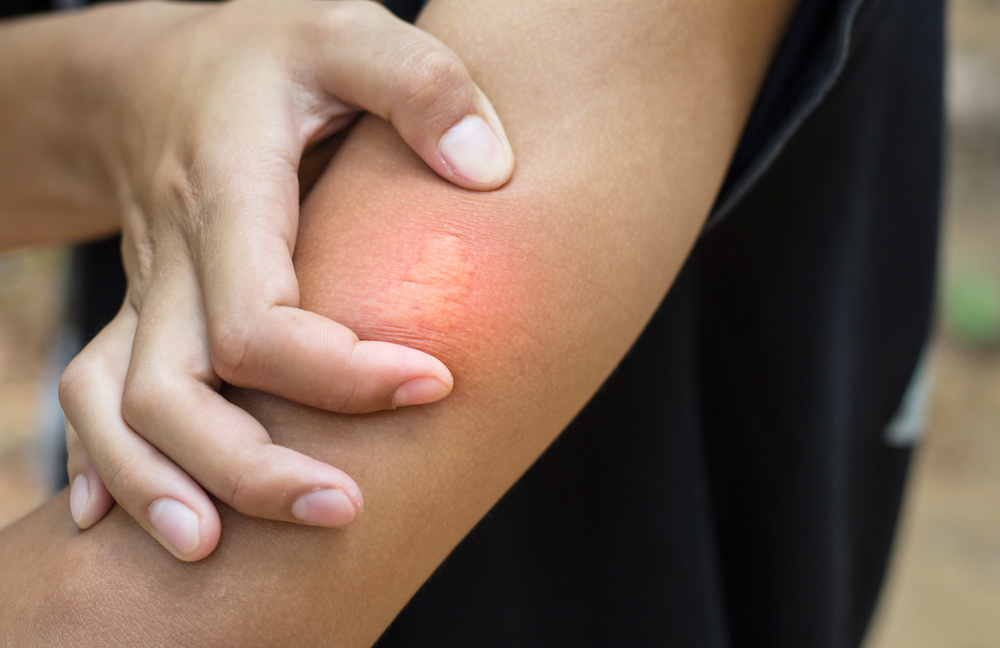Your Top Questions About Bee Stings Answered


When it comes to honey bees, one of the top concerns is the fear of getting stung! Deaths from a bee sting are relatively rare. However, bee stings do result in quite a few hospitalizations every year. While most people can say that they have been stung by a bee, there are a select few who have a very serious, negative reaction. For those who do have negative reactions, what is the chemical process that occurs when stung by a bee?
What is a bee sting?
Worker bees play a variety of roles in the hive. In addition to foraging for nectar, pollen and water, worker bees are tasked with protecting the queen. The queen is the only bee who can reproduce to create more bees. Her unique role makes her safety a high priority among the colony.
The anatomy of a bee is very interesting. When it comes to bee stings, there are two main parts that should be considered: the venom sac and the stinger. It is important to know that honey bees use their stingers as a defensive tool rather than an offensive one. In most cases, honey bees will not sting unless provoked or aggravated in some way.
The stinger on a worker bee is barbed, meaning that it has small projections that allow it to stick more deeply inside the skin of its victim. When the stinger is injected into the skin, it allows it to release venom from the venom sac. At the same time, the stinging bee releases pheromones (or odors) that can alert other bees in the vicinity that an attack is occurring.
Honey bee venom is made up of proteins and other molecules that can cause inflammation, including pain, swelling and itching. For most people, this reaction is uncomfortable but relatively temporary. For other people, the proteins in bee venom spark an allergic reaction called anaphylaxis. This kind of reaction is very serious and requires immediate medical attention.
It can be hard to know if you are allergic to bee venom without being first stung by a bee. If you are concerned about having an allergy to bee venom, you can visit an allergy specialist who can perform a variety of tests to identify allergens that cause a reaction in your body.
What to do if you are stung by a bee?
If you are stung by a bee, remain calm. The first step is to remove this stinger to stop the release of bee venom into the skin. By using a flat, hard surface such as the side of a credit card or even your fingernail, you can remove the barb. If you are not allergic to bee venom, you will want to address your symptoms. Ice can help reduce swelling and can be very effective at reducing some pain.
If you notice more serious symptoms, like difficulty breathing or dizziness, or if the reaction on your skin is more than just mild swelling, redness and inflammation, you may be experiencing an allergic reaction. At this point, you should get medical attention right away.
There may not be much you can do to completely avoid the potential for a bee sting, but there are certainly things you can do to keep yourself safe. Never aggravate a bee hive or attempt to do harm to a colony. If you believe you have a bee infestation on your property, do not try to remove it on your own. Instead, contact your local live removal professionals to handle the job safely, humanely and effectively.
If you live in the San Diego area and are experiencing a honey bee infestation, contact D-Tek Live Bee Removal today to schedule a humane bee removal service with our expert bee removal technicians.
